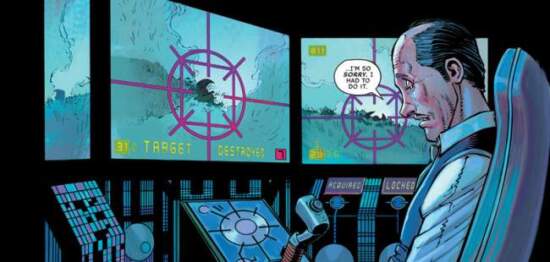All Star Batman #1 (review)
(DC Comics, August 10, 2016)
Writer: Scott Snyder
The premise underpinning the first issue of a new title from American publisher DC Comics, entitled “All Star Batman”, will be impenetrable for most readers who are not up to date on the Batman mythos.
For those who are and who follow the adventures of masked vigilante and detective Batman, it is intriguing enough to warrant a read. Batman’s schizophrenic villain Two Face, who experiences tortuous phases between his personality as former Gotham district attorney Harvey Dent and his psychopathic alter ego, has become such a big problem that even mob bosses in the fictional backdrop of Gotham City helped Batman bring him down. The comic shows the aftermath of a recent failed plot that had something to do with acid rain falling on Gotham and injuring hundreds of people, followed by the Batman receiving a unique request from Harvey Dent.
In his sane persona, Dent admitted that his alter ego is coming back stronger and may become even more dangerous. Dent hints at another big plot being hatched. Dent asks to be taken to a certain “house” where everything started so that they can “burn” the Two Face persona out of Dent once and for all. Whether this is a literal or figurative immolation is not clear. But what is clear is that it is a risky plan that could turn out to be a trap, something anticipated by both Batman and his coterie of sidekicks.
The character Two Face is one of the most interesting characters in Batman’s rogues gallery. In Batman’s continuity, the character started as a well-meaning and proactive district attorney in the crime- and beaurucracy-infested Gotham City, who had half of his body burned as revenge by a mob boss. The event turned Dent into a violent schizophrenic, torn between his original personality and a Hyde-like persona representing his burned half. All of his decisions are decided not by logic, but by the toss of a two-faced coin.
In “All-Star Batman”, Two Face’s true strength – information – is realised. In his time both as a district attorney, and also one of Gotham underbelly’s major ringleaders, Dent / Two Face has established and maintained systems that track all criminal behavior, giving him exclusive access to crucial information and evidence that can be used against other mob bosses and corrupt officials.
While being transported by Batman to the mystery house, Dent reveals that Two Face is in control, and that he has made a public broadcast announcement that should they reach their destination, everything Two Face has on everyone – including civilians – will be released. But should someone manage to kill Batman and set Two-Face free, that person would be rewarded with the fortunes of the three biggest crime lords in Gotham via a secret untraceable transaction.
The premise brings to mind the plot hatched by the Joker in the 2008 film “The Dark Knight”. Both are designed to weaponize the public against the Batman, with the difference being that the film uses self-preservation as an incentive, while “All Star Batman” leverages greed.
The comic then has Batman dealing with minor-level villains Firefly, Killer Moth, and Black Spider, dispatching them easily, only to be shot by a mob of civilians who want the reward. Batman was still able to get out of the predicament, but the comic ends on a very important cliffhanger: Batman’s long-time butler Alfred Pennyworth is a traitor, carrying out an act of betrayal with tears in his eyes.
“All Star Batman #1” does not do a good job at fleshing out the story. It may feel disjointed to anyone who is not amongst the most obsessed of Batman readers. It does however bring a lot of action and has well-written, witty dialogue. The comic will be enjoyable to fans who can follow the plot. What will inevitably draw a negative response is the decision to write the ever-loyal Alfred Pennyworth as someone who will betray Bruce Wayne willingly – a mischaracterization that would probably inspire the same fan outrage as Marvel Comics’ poorly thought-through decision to recast its patriotic superhero “Captain America” as a Nazi double agent. The desire to refresh and add unexpected intrigue runs the risk of alienating the core readership.




